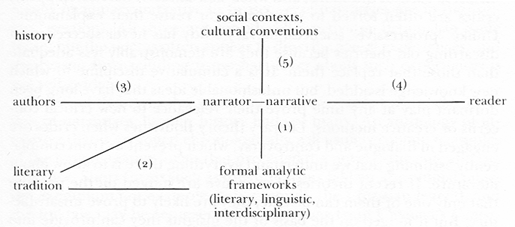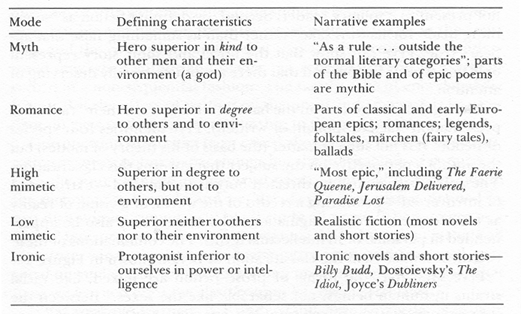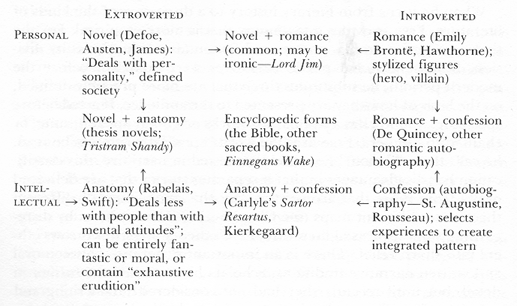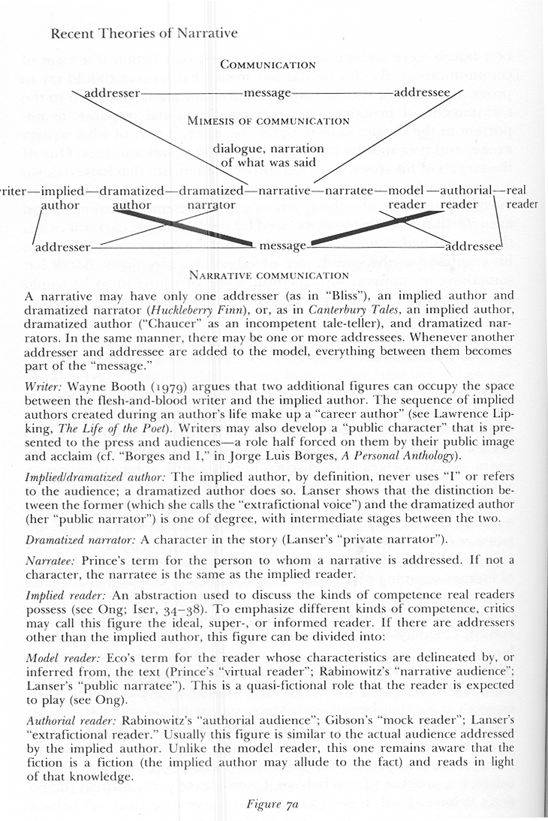George Herbert Mead is one of the seminal influences in symbolic interaction, which is a semiotically oriented subfield within sociology. Symbolic interaction alone claims that action is based on meaning, and meaning is socially derived. I think that the pair of meaning and action is strongly reminiscent of the semiotic dyad. I would like to consider symbolic interaction from the perspective of symbolic cognitive science and AI. The flaws of symbolic AI are tempered by the social origin and construction of meaning, and the manner in which action and meaning are interweaved.
Mead describes his work as behaviorist, but he interjects an important layer between stimulus and response, which is the matter of interpretation. I think this layer is extremely important, but I suspect that the pattern of stimulus, interpretation, and response is still not sufficient to serve as a model for simulation of social agents. When considered in context of roles and performance, as described by Erving Goffman, the perspective seems much more complete.
This book in particular is a compilation of Mead’s theory of social psychology. The ideas were developed in 1900 and the book was published in 1932. The preface argues that the work is incomplete, but is the fullest volume of Mead’s on social psychology. Mead is something of a bridge between science and philosophy. The emphasis is strongly on the dependence on society, which is at odds with the more individualistic trends in early cognitive science and psychology. According to Mead, the mind is an emergent phenomenon. Reminiscent of Vygotsky, Mead argues that language is the means for this emergence. The transformation from biology to mind is given in terms of language, but the examples given are about symbols and contextualized meanings. Interestingly, meanings are not subjective, private, or mental, but they are instead shared and objective within the situation. This sort of reference is akin to Agre’s diactic entities.
Contrary to trends within cognitive science, the manner of reasoning goes from the outside in, with society before the individual. “Instead of beginning with individual minds and working out to society, Mead starts with an objective social process and works inward through the importation of the social process of communication into the individual by the medium of the vocal gesture.” (p. xxii) This is a dramatically different perspective than engineered by Newell. Mead would probably argue that Newell’s model of cognition fails because of its failure to sufficiently consider the elements of interpretation and selfhood within everyday life.
The Point of View of Social Behaviorism
Social psychology is interested in the effect of the social group on individuals. The use of behaviorism seems to be a matter of method: it is argued that the observation of conduct is sufficient to understand psychology. This is in opposition to the study of introspection (encouraged by Wundt), which attempts to imagine and infer the internal cognitive processes at work in the human mind. Introspection and behaviorism are two ways of approaching a black box problem. The behaviorist position does not argue that it can explain what is inside the box, but it can explain how the box interacts with the outside world. Introspection aims to piece together the insides from both observation and self-reporting. Newell and Simon make use of introspection through their think-aloud protocols in their research for GPS. As an aside, the difference between introspection and behaviorism is interesting within the context of fiction. Introspection gives insight into character’s inner lives, which may be unreliable, where without that view, the reader is left to guess.
Mead favors the behaviorist position, making the claim that the behaviorist method is sufficient to study social psychology. This argument does not devalue the internal mind, but it argues that it does not need to be considered in this case. Mead’s position is understandable because he is constructing a perspective of social psychology, which is dependent on interaction. Interaction relies on individuals considering each others’ conduct, and not each others’ internal minds. Mead does argue that we can only understand conduct in terms of language. I might adjust this claim somewhat, and argue that we might consider gestures, gazes, and other expressions part of that language.
Despite his behaviorist claims, Mead makes a significant break from the traditional separation of stimulus and response. He also foremost prioritizes the society before the individual. In both senses of ‘prioritize,’ society both comes first and is of foremost importance. “We attempt, that is, to explain the conduct of the individual in terms of the organized conduct of the social group, rather than to account for the organized conduct of the social group in terms of the conduct of the separate individuals belonging to it. For social psychology, the whole (society) is prior to the part (the individual), not the part to the whole; and the part is explained in terms of the whole, not the whole in terms of the part or parts. The social act is not explained by building up out of stimulus plus response; it must be taken as a dynamic whole–as something going on–no part of which can be considered or understood by itself–a complex organic process implied by each individual stimulus and response involved in it.” (p. 7) Also important in this passage is the sense of understanding individuals based on terms that are used to understand the society. This is the origin of shared social meanings, which are used to define individual thoughts and interactions. Mead’s approach at its onset rejects the idea of psychic unity because of his claim that individual minds are are formed through social interaction and must be understood in those terms.
Symbols and intentions are introduced as an awkward way of formulating communication. The model proposed is that symbols are presented in communication, and the goal of communication is for the intention behind the symbol in the speaker to be reproduced in the listener. This does not seem like a correct model of communication, as it misses elements where the intention is meant to be opposite and not shared, or misleading communication. One example of this is where one individual makes threatening gestures, and its intention is aggression, whereas the recipient’s intention (if the communication is successful) would be fear or submissiveness. This sort of example is discussed somewhat, but does not seem to be clear.
Mead is criticizing the Watsonain approach to behaviorism, which would involve raw stimuli and responses. Similarly, emotion is studied in terms of physical manifestations. Darwin treats emotion as a mental state (as opposed to a valenced reaction), and mental states necessarily depend on consciousness. Mead wishes to focus on the social, which precludes consciousness. The raw stimulus and response approach to psychology yields a study of psychoses that map to neuroses. Mead does not wish to emphasize or promote the difference between mind and body. Instead, he wishes to find a correlation between the experience of the individual and the situation, not the individual and the stimulus.
Mind
This section is on the symbolic nature of communication, which may be gestural (speech is seen as a kind of gesture). Communication, as described, works when one makes a gesture, and the intent of that gesture is shared and taken up by the recipient. This argument may be readily challenged. Interaction is applied to social symbols, and the recognition of a symbol generates a response.
Language does not reflect things that exist, but also makes it possible for new situations and objects to exist. This works in the sense that an object is dependent on circumstance and use. Social process enables new objects, and communication brings out new relationships between gesture and act. When the self and matter of interpretation is introduced, gestures become symbols. The general nature of objects is very useful and important. Mead has a somewhat idiosyncratic understanding of what an “object” is, but it is extremely relevant for representations of social interaction. An object is something that may be observed or referred to. In this sense, objects are different depending on circumstances, and new objects may be formed via communication and interaction.
The Self
Mead draws a distinction between the body and the self. I think this may still be challenged, but it is interesting that the distinction is not between body and mind. The “self” is reflexive: it may be either a subject or an object. Communication is enabled and operational by making use of the self as an object. With Mead’s nuanced understanding of an object, the idea that the self can be made into an object is actually quite remarkable. The self may take on different meanings according to the circumstances, and this is very important for the understanding of social behavior and action.
The self is primarily not physiological, but the physiological organism is essential to the self. The self as a social object is socially (and therefore culturally) determined. Mead does discuss the performative element of action, but only briefly. Thinking is required prior to social action, but thought is merely inner conversation. The complete self is a reflection of entire social processes: “In other words, the various elementary selves which constitute, or are organized into a complete self are the various aspects of the structure of that complete self answering to the various aspects of the structure of the social process as a whole; the structure of the complete self is thus a reflection of the complete social process.” (p. 144; emphasis mine) This bold claim ties back to both a challenge of psychic unity and a use of Vygotsky’s internalization. The individual is thus a reflection of the social whole, complete with its cultural meanings and values.
Mead discusses children and games and play. Development is posed as a process (at the kindergarten level), where children play and enact roles, which involve role taking of the other. This also calls for the individual to simulate, through play, the “generalized other,” which is still situational. The elements of simulation and role taking reverberate with trends in modern developmental cognitive science (think Tomassello), and also bridges this with elements of play and performance. Play works in the sense of “playing at” another, but also in the sense of free movement within a permeable imagined social landscape.
Simulation of the generalized other is necessary for thought, that is, it is necessary to enable internal conversations. Through role taking, it enables continuation and enforcement of social practices, standards, and values. This goes hand in hand with identity (in the sense of Holland) and indentification, accounting for the diversity of social groups.
There are two stages of the self: (1) The individual self, which has personal attitudes. (2) The social self, which engages in role taking and simulation. Mead’s example in the latter is a game. I would argue that games have significant potential for role taking on their own. The game is a structure for an organic system of meaning. It is also worth it to compare these two stages with the capabilities of characters in digital games. Characters in digital games tend to be bound to some (somewhat social) system of meaning by its very rules, but most game characters only have fragmentary data that reflects their individual standing within the world. It is by incorporation of social attitudes, the achievement of the second stage of the self, that social patterns are internalized into the individual.
The metaphor of gameplay as a means for social integration is valuable, especially from the perspective of games in development, and the establishment of models. It is important that “He has to play the game.” Mead’s example is of children playing a ball game as a metaphor for introduction into society. It is necessary for a child to play the game in order to understand it, similarly, it is necessary for individuals to participate in society in order to understand the meaning of social interactions. Games and social value systems are understood through play, participation, performance, and practice.
A final important note: “No individual has a mind which operates simply in itself, in isolation from the social life process in which it has arisen or out of which it has emerged and in which the pattern of organized social behavior has consequently been basically impressed upon it.” (p. 222) Mead’s position is very much in contrast with the theories of cognitive science that emerged later in the 1960s. Despite their independence, Mead resonates with Vygotsky as well. Mead’s theory of social dependence is remarkably progressive and ahead of his time.
Society
Society is dependent on communication, which, as was established earlier, is dependent on language. I would argue that human society as we know it is distinguishable because of symbols and meaning, although these are somewhat vague and abstract. Mead is interested in differentiating between human and insect society. The matter of symbol and communication are ambiguous in this context. Insect society is characterized by a certain direct mapping between stimulus and response. Human society is different because we possess selves, which allow us to interpret senses into symbols, rather than act directly on those senses themselves.
The development of society is dependent on the common experiences of its members. Communication is thus dependent on society: “You cannot build up a society out of elements that lie outside of the individual’s life-processes. You have to presuppose some sort of cooperation within which the individuals are themselves actively involved as the only possible basis for this participation in communication.” (p. 257) This exposes a complexity with Mead’s earlier claims about the individual’s dependence on social meaning. Here he claims that social meaning must originate from individual meaning. This is a cyclic argument, but accurate. The natural conclusion is that the individual cannot be separated from the social. In order to understand one, we must understand both. In order to understand meaning of symbols, it is necessary to consider the social meaning of the symbols, and the experience of those symbols by individuals.





